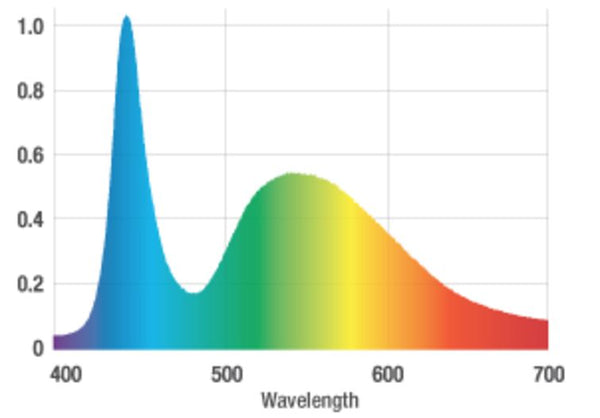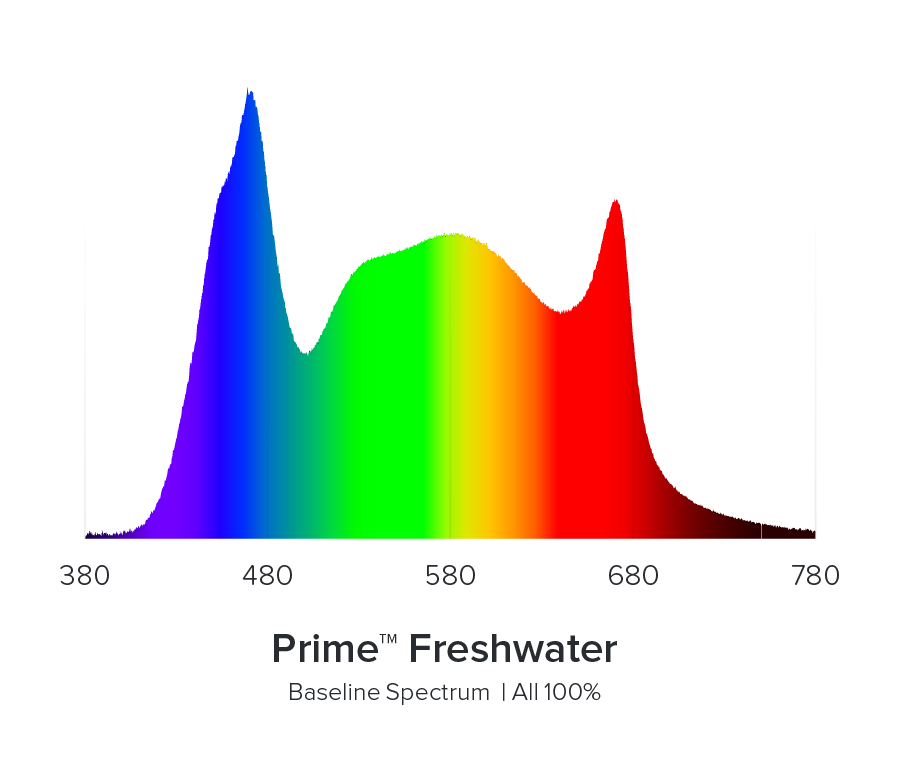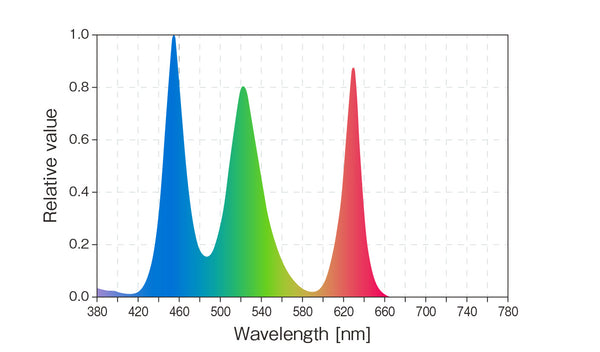
Tank above lit by Week Aqua p900 and Chihiros Vivid2 LEDs.
The problem with most LEDs on the market
LEDs are very commonly used in aquariums. Generally, they can grow plants well enough. The main group that finds fault with them are folks that are attempting to grow red plants optimally. Old school T5 users found that they grew better red plants with their specialty T5 bulbs than most commercially available LEDs. LEDs are sleek and more energy-saving, and while most of them grew green plants well, many lack the ideal spectrum for stimulating pigmentation in red plants. Many of them grow red plants ‘okay’ but not to the color saturation of which the plants were capable of – which led to many red plant enthusiasts returning back to using old T5 systems.
For plant centric folks where plant pigmentation and coloration is paramount, there were still better options regarding spectrum selection using speciality T5 bulbs. Most commercially available aquarium LED units lack adequate red and blue spectrum compared to the spectrum that specialty T5 bulbs provided.
This is largely due to the usage of white LED diodes, which generally lack red spectrum. Most white LEDs have a fair amount of blue, and significant amounts of green/yellow, but lack red. A sample 6500k LED’s spectrum curve is shown below – it has a large peak in blue and a lot of green and yellow in the spectrum but not much red.
A typical LED that claims to be full spectrum or “RGB” tends to have a spectrum chart like below; while it has peaks in blue and red, much of the spectrum is dedicated to large amounts of green/orange. This dilutes the visual saturation of plant colors overall, even though it looks like the light has good coverage across the whole ‘usable light spectrum’.
LEDs that can display and grow red plants well
In recent years some LED makers make use of RGB diodes to replace most or all of the white diodes. Using only Red, Green and Blue diodes to produce white light gives a spectrum curve more like the one below. We see a high saturation in the 3 peaks; Red, Blue and Green with big gaps in between. This narrow spectrum approach seems counter-intuitive for folks that think that we need to replicate the broad spectrum of sunlight to grow plants well, however, not only do the LEDs that use such spectrum grow plants very well, they also give much higher visual color contrast to broader spectrum LED models, and render richer looking color tones for Green, Yellow etc as well.
The LEDs that make use of the narrow spectrum approach include:
- WRGB and Vivid series by Chihiros
- Week Aqua Series
- ADA solar RGB (by Aqua Design Amano)
- Life Aqua master pro (by Maxlite)
- Twinstar S Series (more rounded spectrum)
- ONF Flat one (slightly more rounded spectrum)
Some examples:
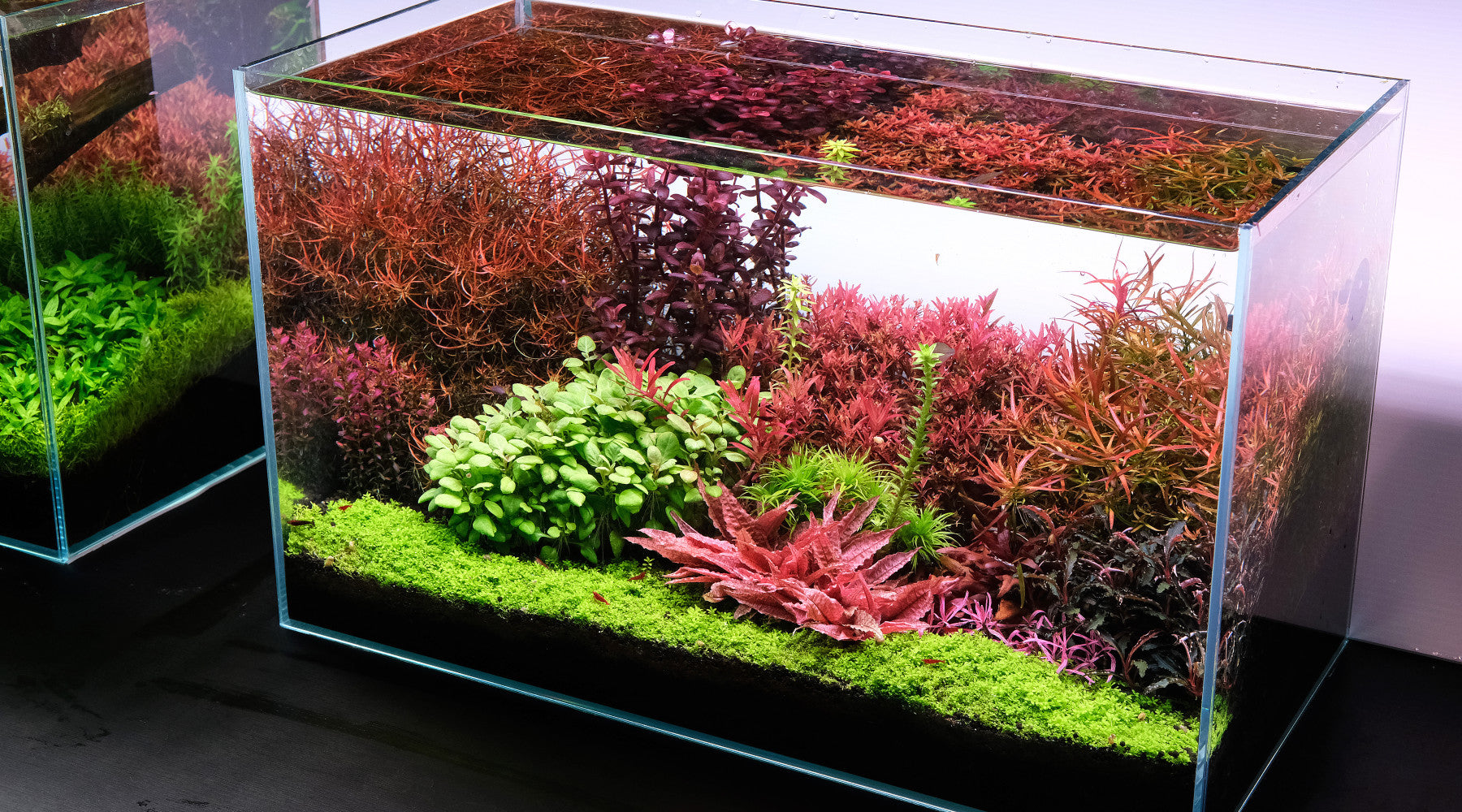
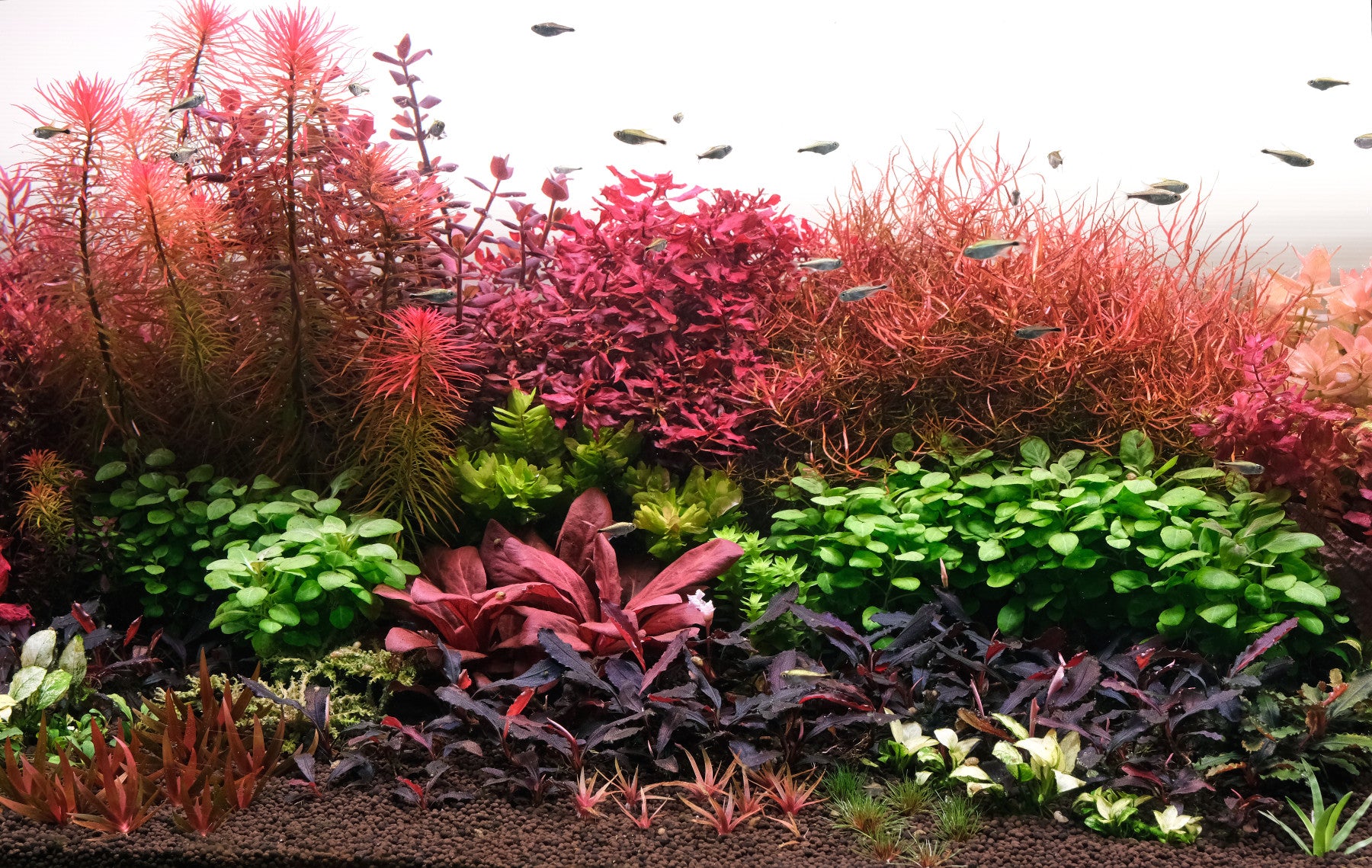
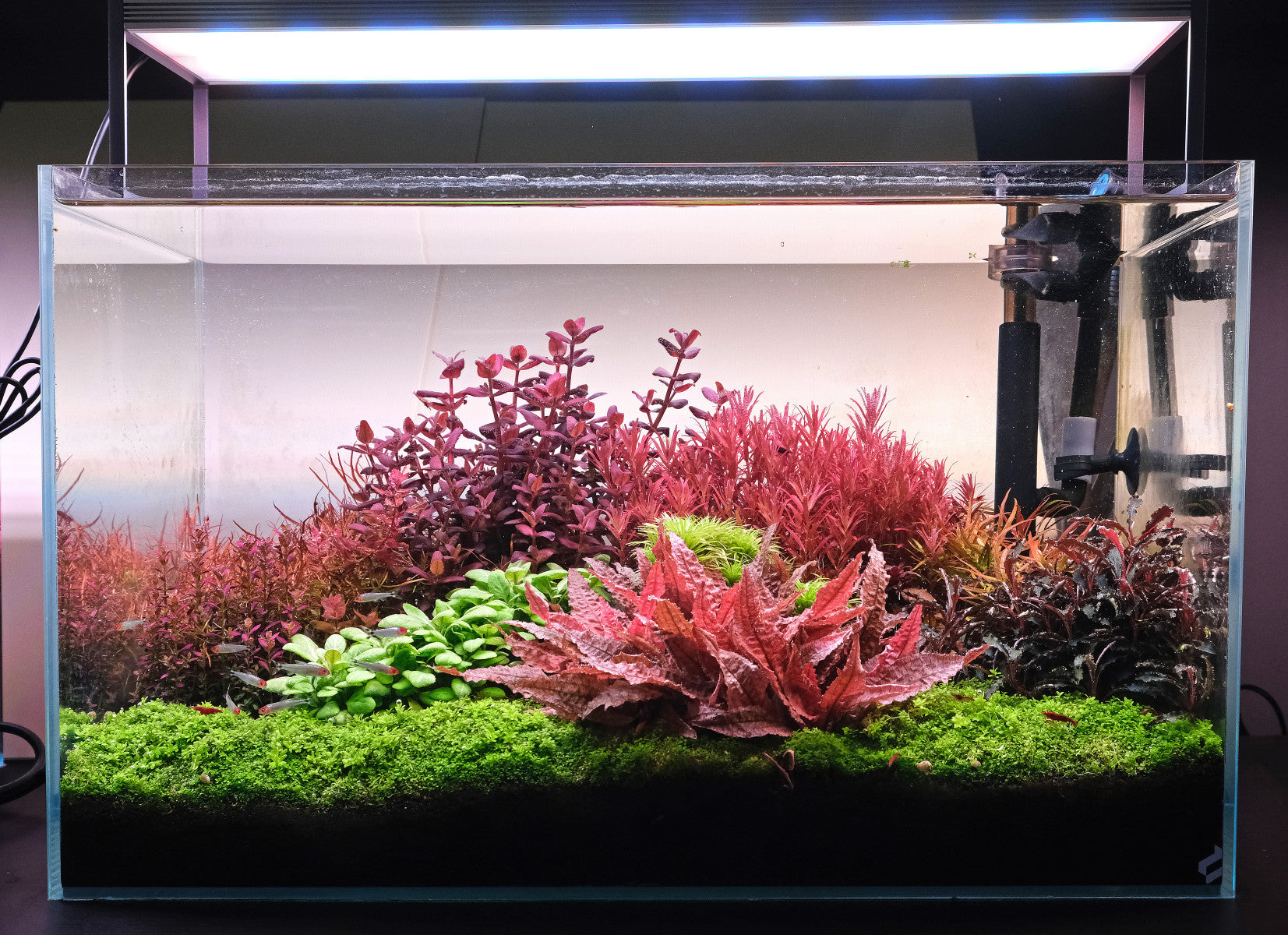
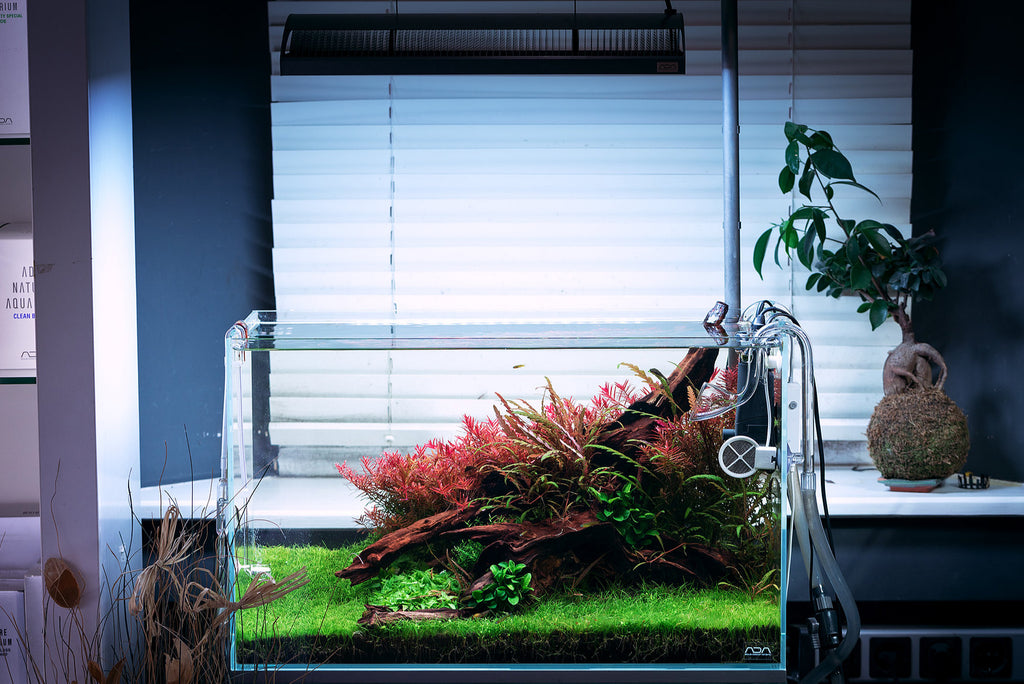
Comparison of ADA solar RGB and some other fixtures:
Comparison of Chihiros Vivid and other Chihiros fixtures (the WRGB 2 has same spectrum as the Vivid):
Differences between the different brands
The Chihiros vivid is programmable with custom spectrum tuning and timing and the app has improved since the earlier versions. Life Aqua master pro is dimmable and water proof. The ADA solar RGB is a no frills unit (no custom spectrum, no timer function) but carries the ADA brand name. Due to exact diodes chosen for their RGB profile; there is also slight differences in visual coloration – the ADA solar RGB has a slightly deeper green tone compared to the Maxlite and Chihiros vivid. ONF Flat one and Twinstar S have more rounded spectrums with less contrast compared to the rest; it may look more ‘natural’ but less saturated.
Week Aqua has recently entered the market and their lights have good spectrum selection with the addition of UV diodes that other LEDs lack and are programmable (both spectrum and timer). Their P series and A series are outstanding. The downsides are the difficult-to-use app and the lower reliability of the lighting units and control app.
